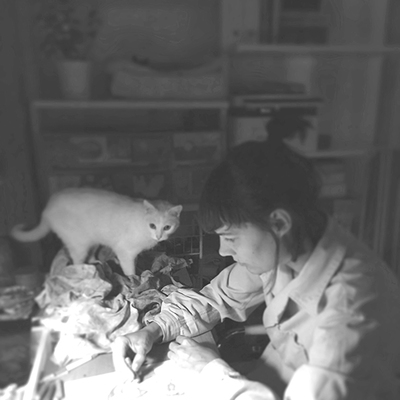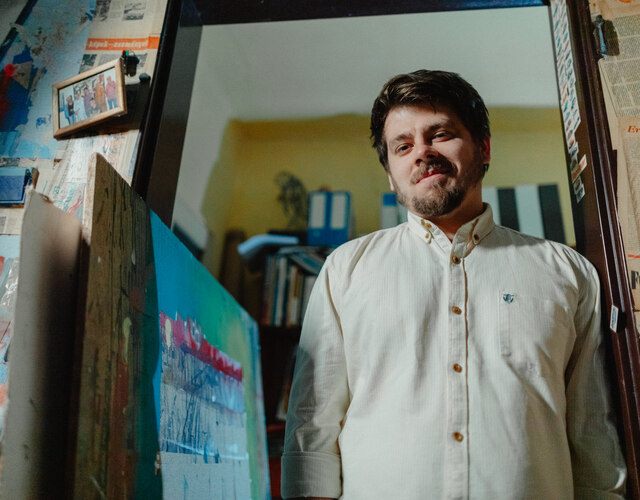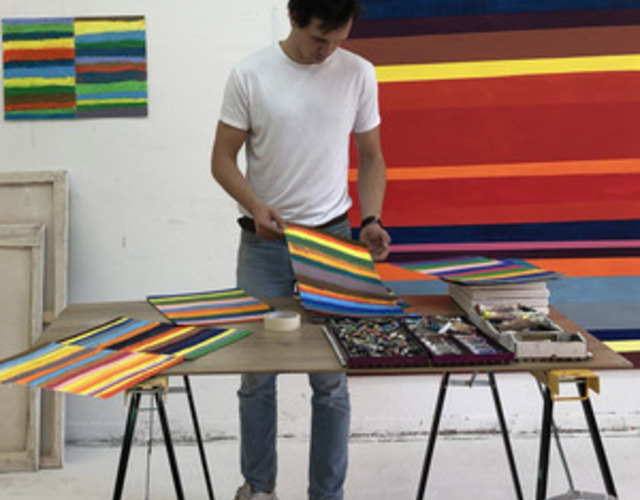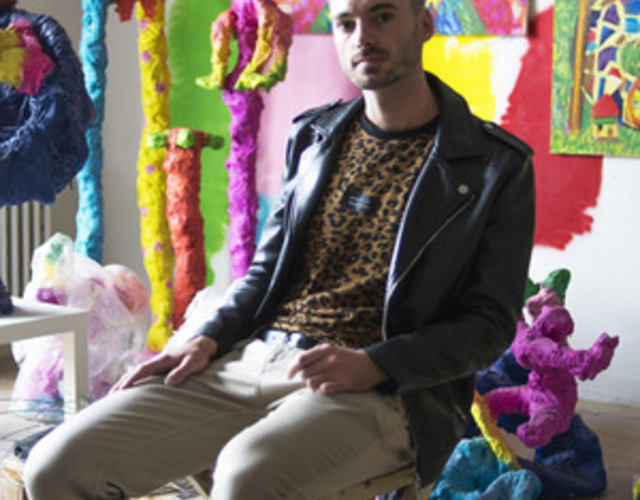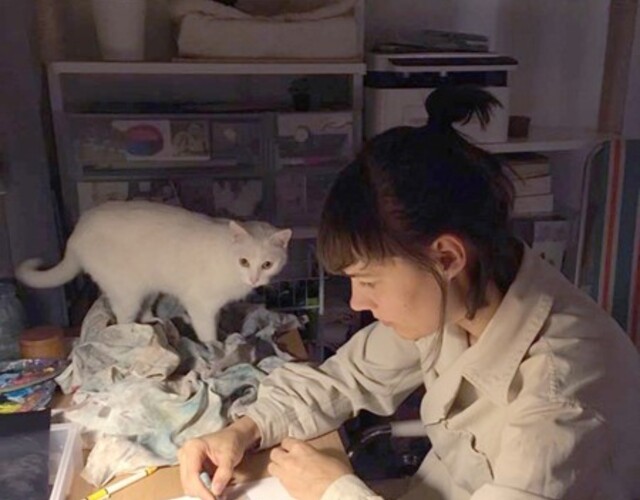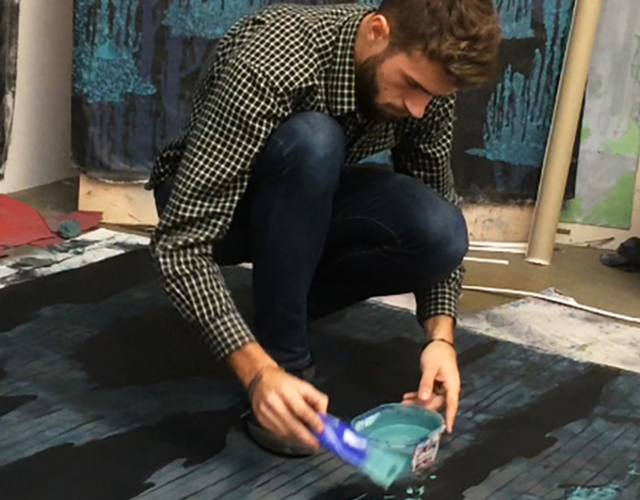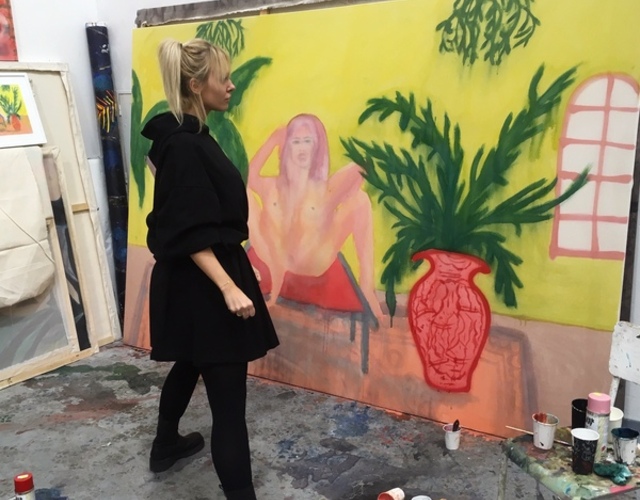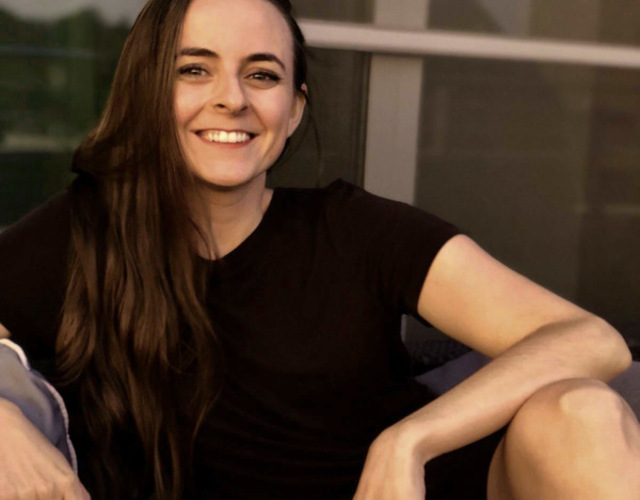Adela Jirku
Published 2021-04-17
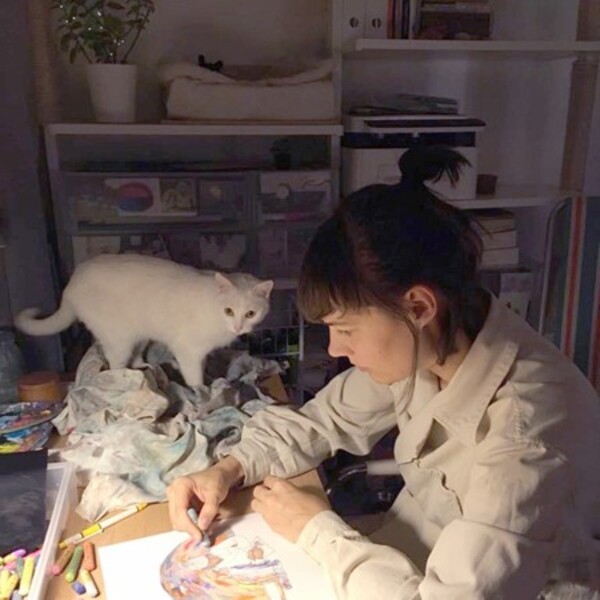
The Arboreal Soul of Adéla Marie Jirků
As I contemplated the cover photo taken in Adéla’s study, a painterly variation on Apollinaire’s well-known poem came together in my head: “I wish there to be in my house: / brightness from dawn to dusk, / a cat to watch over the paintings / and colors, colors without end / – without them I could not live...”
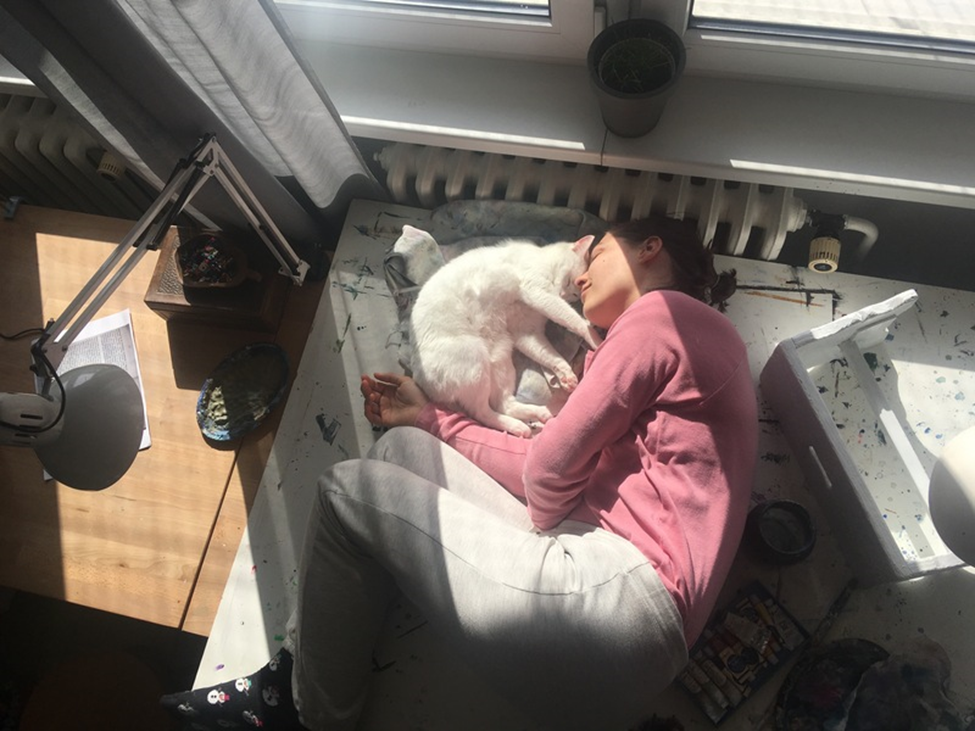
I recall how in my youth I felt a bit sorry for the seemingly anguished poet, toward whom, in Švabinský’s print, the statuesque muse turns with the calming gesture of a mentor. Painting, considered more to be a craft, did not have muses. But why couldn’t a muse by embodied by a creature that encourages or praises the artist by lightly rubbing its furry little head against her? Yes, that’s right. The guardian of Adéla’s work, her model (Cotton Ball, 2020) and Muse (2021), is a white cat.


Adéla’s forested landscapes sometimes seem to be only caressed by the delicate tails of paintbrushes, sparingly applying diluted acrylic paint, and here and there, lines are applied lightly with oil pastels as if by gentle claws... But this is not something universal: sometimes Adéla’s technique of gentle touches is replaced by bolder gestures and denser paints in stronger shades (Pink Sky, 2020; Wallachian Panorama, 2019).

At one point, her landscape paintings were dominated by conical mountains reminiscent of a Chinese landscape somewhere in the Guangxi region. Or perhaps mountains from a fairy tale. Dissolving, bleeding, fading. Mountainous formations defined by a suggested line and emerging from damp paint stains in dreamlike shades of ink black and purple.
This combination of colors gradually spilled over into other subjects. At first, into familiar scenes from Prague, clearly sketched out, often featuring staffage, calling up associations with Sunday walks “to the city” and “from the city”––to the Castle, along the riverbank, or also to the Hvězda Game Preserve, where that rare city snow has finally fallen... Trifling images that many people who spent their childhoods in Prague associate with shards of similar Sunday recollections—and a bit of nostalgia.
An entire distinctive chapter in Adéla’s work is characterized by faithful drawings, often featuring clean lines: her playful, surrealistic, I would even say “poetic,” works combining pencil drawing with collage, often torn between delicate, poetic emotionality at one pole of meaning and irony at the other.

But landscapes are the dominant theme of Adéla’s paintings. The technique for creating paint spots that gently soak into the canvas and lightly bleeding lines remains the same; the subjects, however, are gradually transformed into much more concrete, tangible (sub)mountainous landscapes featuring cottages. These paintings mostly depict the landscape in fall or winter, but sometimes in early spring, too. But they are not just mere states; the paintings imply the natural processes associated with these seasons (A Small Pond, 2018). The painting technique seems to be related to them: with the darkening and wetting of fallen leaves, with the transitional purple tones of cold late afternoons, with the slow melting of snow, through which dark stains of damp soil are beginning to show, with tracks in the snow that fill with water that will once again freeze at night (Winter, 2019).

The viewer is subconsciously reminded of the work of landscape painters who were connected by their affection for the Bohemian-Moravian Highlands and, above all, their inclination toward creating paintings that sometimes “ooze with humidity.” An anonymous figure struggles to lift its feet in the mud in a funeral procession (Slavíček), unhurriedly watches chunks of ice in a stream from a crooked old footbridge (Blažíček), or steadily marches toward its destination, with its head slightly bowed to protect from gusts of fresh wind but without regard for the gullies on the road (Mareš). The figures have disappeared from Adéla’s paintings. The only things that remain are animals, treetops, and the seemingly intimate windows of old cottages (The Crossroads, A Neighbor, 2018). However, by mentioning this line of landscape painting, I do not want to suggest a superficial similarity: I would rather praise the intensity with which Adéla senses the atmosphere around her and her ability to transfer that feeling to the viewer.

The slow passage of time waiting for spring. Fog as the fogging over of memories of things that we didn’t actually experience and maybe only that we always wanted to experience. We could say that Adéla’s paintings have shifted from dreaming about mountain summits to relaxing and quieting down in the foothills. Although we might guess which region served as a model based on the depicted architecture (and in rare cases on the title), it is clear that these landscapes are becoming increasingly disconnected from any specific scenery. Instead, they become landscape and mainly forest atmospheres lying at the intersections of the seasons and times of day, and/or on the border between meadow and forest. Spatiotemporal transitions here appear to be the driving principle of composition, for example, in the depiction of the last waves of light on the horizon defined by the treetops (Dusk, 2019).

The forest seems to gradually become its own abstraction, a depiction of the forest itself, its healing air and soothing semidarkness. And even a depiction of the Arboreal Soul (2020). But let’s not confuse this with a soul imprisoned in a tree, a motif we might encounter in a fairy tale or in Karel Jaromír Erben’s ballad The Willow. Adéla’s arboreal soul is scattered among the drooping branches of spruces and the glimmering lacework of deciduous trees, like the purple aura of late afternoon in winter and the peachy pinkish drizzle of early spring mornings. It is present in paintings bearing other titles, too. It is a gentle quivering, upon which we can feast our civilization-weary eyes, where we can immerse ourselves in silence and let our soul flow on the waves of the arboreal soul.

text: Alice Jedličková
Photo: courtesy of the author
